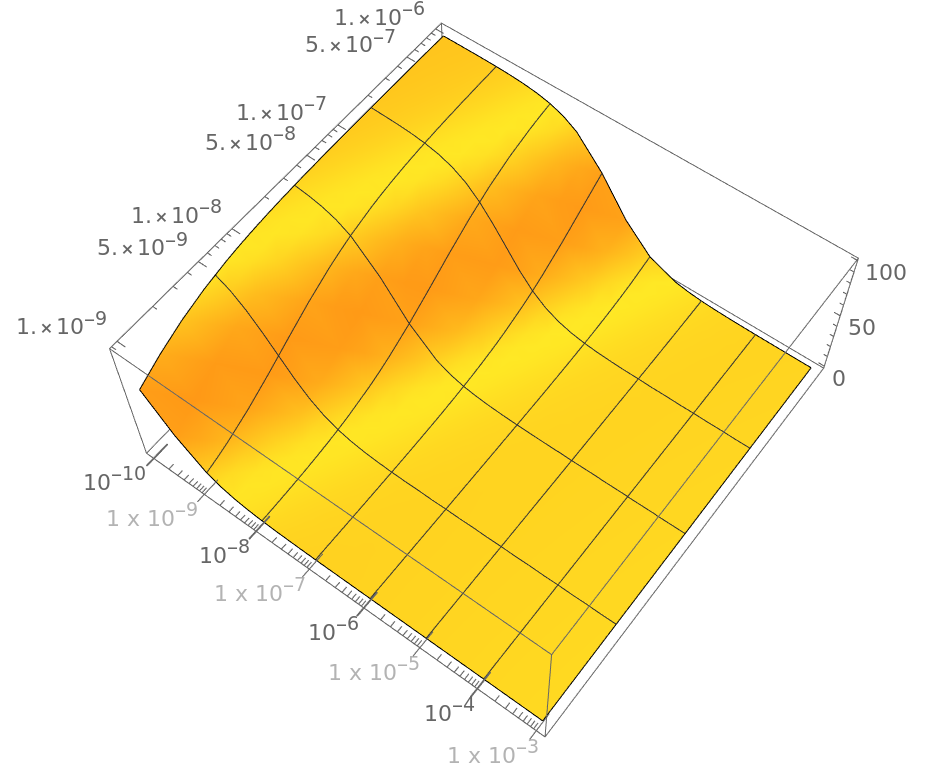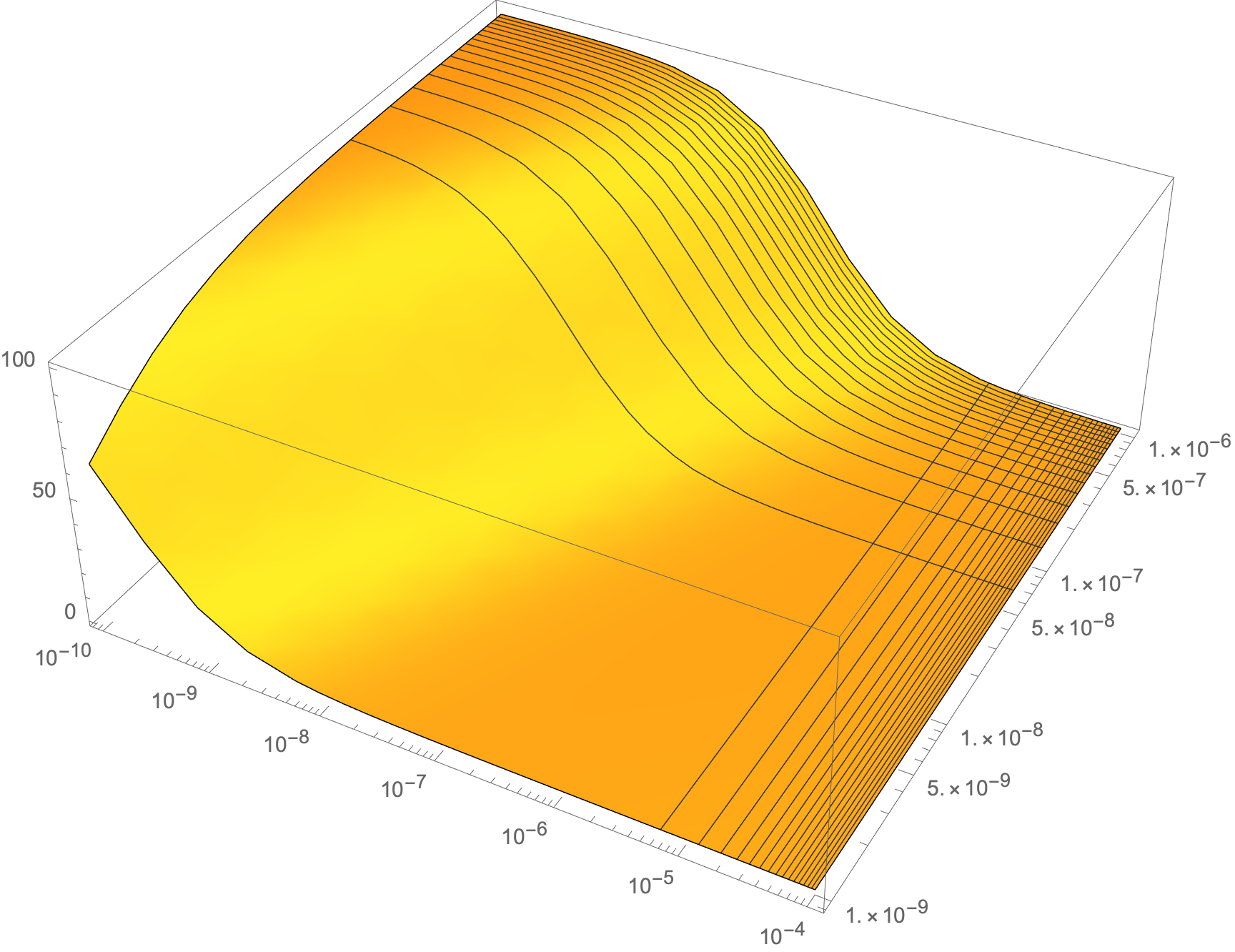We can fully control both the tick labels and the tick marks one each axis with the Ticks option. Your log scale could have 7 decades and 4 labels. There should be a tick mark at each mantissa from 1 to 9 and each exponent from -10 to -3. Let's define a function that gives the proper tick label and tick mark style.
The 4 labeled ticks have a mantissa m=1 and an even exponent, k, so we define
Clear[form]
form[m_, k_] := {10^k, Superscript["10", k],
{0.02, 0.01}, Thickness[0.0025]} /; m == 1 && EvenQ[k]
In the above we use Superscript for the label, specify the length of the ticks on each side of the axis and we make the tick mark a little thicker.
The unlabeled decades have m=1 and odd exponents. We use Opacity to control the visibility of those labels like this:
form[m_, k_] := {m*10^k,
Style[Row[{m, Superscript[" x 10", k]}], Opacity[0.5]],
{0.02, 0.01}} /; m == 1 && OddQ[k]
We specify that all other tick with a transparent label, as
form[m_, k_] := {m*10^k, Style[m*10^k, Opacity[0]]}
Now we can apply this function like this
xticks = Flatten[Table[form[m, k], {k, -10, -3}, {m, 1, 9}], 1];
Plot3D[(0.14 y/(x + (y - x)*0.14))*100,
{x, 1/10^10, 1/10^3}, {y, 1/10^9, 1/10^6},
ScalingFunctions -> {"Log", "Log", None},
ColorFunctionScaling -> True,
Mesh -> {6, 3, 1}, MeshFunctions -> {Log[#1] &, Log[#2] &},
Ticks -> {xticks, Automatic, Automatic}]

The Mesh and MeshFunctions options are used to align the mesh to the axis tick marks. The gray tick labels show how we could control the mantissas and exponents in the odd exponent labels if that is style we want. Or we can turn them off by changing the opacity to zero.





